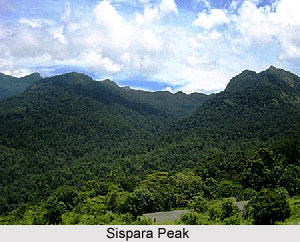 Sispara Peak is a mountain peak nestled in the Kerala state of India. It is the second highest peak in the core area of Silent Valley, Anginda peak at 2,383 metres being the highest. This peak is home to the people of Toda tribes. The highlight of this peak is the amazing greenery that envelopes it from every angle.
Sispara Peak is a mountain peak nestled in the Kerala state of India. It is the second highest peak in the core area of Silent Valley, Anginda peak at 2,383 metres being the highest. This peak is home to the people of Toda tribes. The highlight of this peak is the amazing greenery that envelopes it from every angle.
Location of Sispara Peak
It is located in the Western Ghats of South India. It is situated in the northeast end of Silent Valley National Park, in the core area of the Nilgiri Biosphere Reserve. The peak is near the southwest end of Mukurthi National Park in Tamil Nadu state.
Beauty of Sispara Peak
Soothing environment and greenery surrounding the mountain is the main attraction of Sispara. This peak can be accessed by passing northwest up behind the bungalow, and ascending the high bluff below the peak. Around half an hour`s walk will lead one to a vertical precipice of the escarpment that faces the plains of Malabar. The foot of the precipice reach the brim of this point. This point is enveloped by a number of lofty trees. One will come across a huge peaking mass of rock after walking along the edge of this escarpment. In the words of Henry Francis Blanford, geologist of the Geological Survey of India, the view from this point is really magnificent, particularly that of the gigantic amphitheatre to the right, the termination of the Koondahs on this side. It is very striking to look at this stupendous semicircular recess, formed by enormously lofty mountains.
The Sispara Peak extends across the northeast over 20 miles in a magnificent amphitheatre of steep hills in the Nilambur South Forest Division to Mukurthi peak is the great western escarpment of the Kundah Range. In literary books, it is mentioned that there is perhaps no scene in Southern India more grand and imposing than this gigantic escarpment.
At Sispara, a road has been built forming a communication between the hills and the low country of Malabar, and it is from this road that the finest view of the escarpment is obtainable. Sispara is the only peak to have this facility.
Climate of Sispara Peak
The forests near Sisapara face the full force of the southwest monsoon. It receives upto 250 inches (640 cm) per year of rain. However, it suffers from a long drought during the winter.















